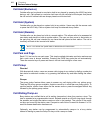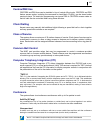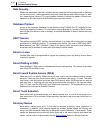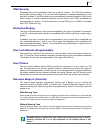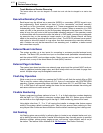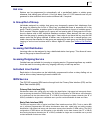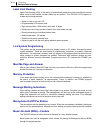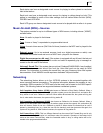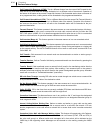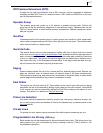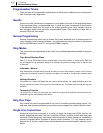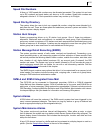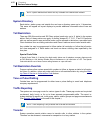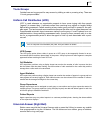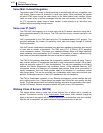
4-16
Chapter 4
Business Features Package
Call Forward No Response (CFNR)
. This is a different feature from the normal Call Forward No An-
swer and is only used when the forward destination is in a different node of the network. Operation of
the feature is the same as the normal Forward No Answer: if the forwarded station does not answer af-
ter a programmed time, a calling station will be forwarded to the programmed destination.
Call Forward Unconditional (CFU)
. This is a different feature from the normal Call Forward All and is
only used when the forward destination is in a different node of the network. Operation of the feature is
the same as the normal Forward All: all calls to the forwarded station will be forwarded to the pro-
grammed destination.
Forward External
. This feature operates in the same manner as a non-networked system with the ex-
ception that, because calls across a network link are trunk calls, network calls do not follow the ICM
EXT FWD option in MMC 210. It is therefore suggested that this option be set to ON in a networked
switch to avoid confusion in operation between networked and non-networked calls.
Call Intrusion (Barge In)
. This feature operates in the same manner as in a non-networked switch.
Call Offer/Call Waiting (Camp On)
. This feature operates in the same manner as in a non-networked
switch. When a called station is busy, the caller can press a Camp-On key and appear as a ringing call
on the second call key. The AUTO CAMPON feature will not work on calls across a network link if set
ON in MMC 110.
Call Transfer
. Calls answered in one network node can be transferred to a station or station group in
another network node.
Transfer Retrieve
. Calls on Transfer Hold during a screened transfer can be retrieved by pressing the
Call key for that call.
Transfer Recall
. Calls transferred across a network link will recall to the transferring station after the
originating system’s transfer recall timer expires. After recalling, if not answered prior to the system’s
attendant recall timer expiring, the call will recall to the system’s designated operator group. Attendant
recalls will not recall to a “Centralised Attendant” (see below).
DDI with Pass Through
. Incoming DDI calls can be routed through one switch across a network link
to be processed by the DDI table of the destination switch.
Do Not Disturb (DND)
. This feature operates in the same manner as in a non-networked switch. An
option in MMC 823 determines the type of DND tone sent across the network link.
Caller ID (CID)
. CID in the forms that are currently available (PRI Name and Number and BRI Num-
ber) will be transported across the network link with the original call.
Centralised Attendant
. This feature allows a user in any switch to dial “0” and ring at the designated
Central Attendant group. Each system on the network requires its own designated attendant group for
local usage and recalls.
Internal Calling/Uniform Dialling Plan
. Station to station and station to group calls can be made
across the network link without having to dial an access code for a call within the network. LCR can
also be programmed to route calls across a network link to access local trunks in another networked
system.
Centralised Voice Mail with Message Waiting Lights
. This feature will operate only with Cadence,
SVMi-8 or SVMi-4 voicemail systems. Users in one node can call forward (CFNR, CFB and CFU) to
the voice mail group in a different switch and messages left in that switch will be indicated on the
VMSG key in the originating switch. Messages can be returned to voice mail by pressing the VMSG
key.



